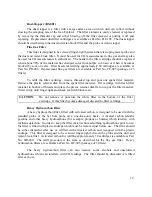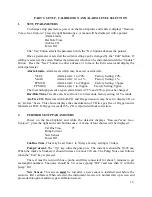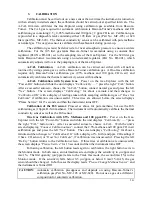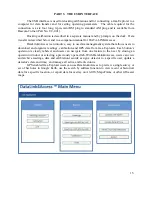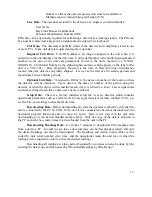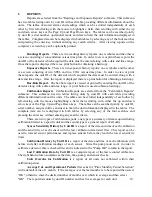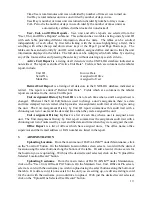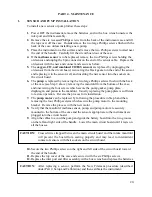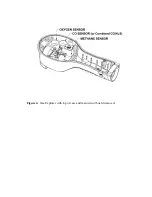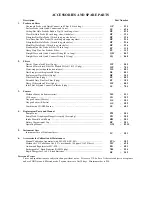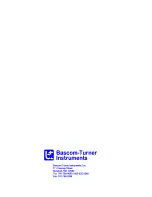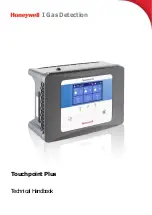
2.
REPORTS
Reports are selected from the "Readings and Exposure Reports" submenu. This submenu
has two tables listing units by unit ID with each table providing different information about the
units. The tables of stored alarms and readings which can be scrolled independently of each
other by first left-clicking with the mouse to highlight a field, then scrolling with either the up
and down arrow keys or the Page Up and Page Down keys. The tables can be searched jointly
by unit ID, serial number, operational mode and date to limit the unit information displayed in
the tables. Complete data can be redisplayed in both tables by selecting any of the four searches
and pressing the enter key without entering any search criteria. After viewing reports on the
computer’s screen they can be optionally printed.
Readings Reports
. There are two readings history reports: one is tabular and the other is
a screen consisting of concentration versus time plots. In order to view or print these reports the
unit ID of the detector which acquired the data must be entered along with a date and time range.
Once the report is displayed there is a print button for obtaining a hardcopy.
Exposure Reports.
There are two exposure history reports: one is tabular and the other
is a screen consisting of two STEL and two TWA versus time plots. In order to view or print
these reports, the unit ID of the detector which acquired the data must be entered along with a
date and time range. Once the report is displayed there is a print button for obtaining a hardcopy.
Bar-Hole Report.
The bar-hole report is viewed or printed by entering the unit ID of the
detector along with a date and time range. A print button is used to obtain a hardcopy.
Calibration Reports
. Calibration Reports are selected from the "Calibration Reports"
submenu. This submenu has two tables listing units by unit ID with each table providing
different information about the units. The tables can be scrolled independently of each other by
left-clicking with the mouse highlighting a field, then scrolling with either the up and down
arrow keys or the Page Up and Page Down keys. The tables can be searched jointly by unit ID,
serial number, assigned office and user to limit the unit information displayed in the tables. The
complete data can be redisplayed in both tables by selecting any of the four searches and
pressing the enter key without entering any search criteria.
There are two types of calibration reports, one type is a summary of data acquired during
calibration limited to a specific unit and the second type is a general report of all units.
Sensor Sensitivity History by Unit ID
is a report of the date and time of each calibration
and the sensitivity of each sensor with the last calibration data listed first. This report can be
used to forecast sensor performance and replace sensors before they reach the lower sensitivity
limit.
Calibration History by Unit ID
is a report of the date and time of each calibration with
before and after calibration readings of each sensor. Since the pump must work in order to
calibrate a detector, this is checked first and is indicated in the "Pump OK" column in the report.
Last Calibration Data by Unit ID
is a complete report of the last recorded calibration.
The right hand column summarizes the date, time, pump, and sensor checks.
Units Overdue for Calibration
is a report of all units not calibrated within their
calibration period.
Average Cal. and Operational Periods
first asks for "Prior Monthly Period Selection"
with a default value of 1 month. If the averages over the last month are to be reported then select
“OK", otherwise enter the desired number of months over which to average and then select
"OK". The report lists units by unit ID number and has five averages for each unit: 18.









